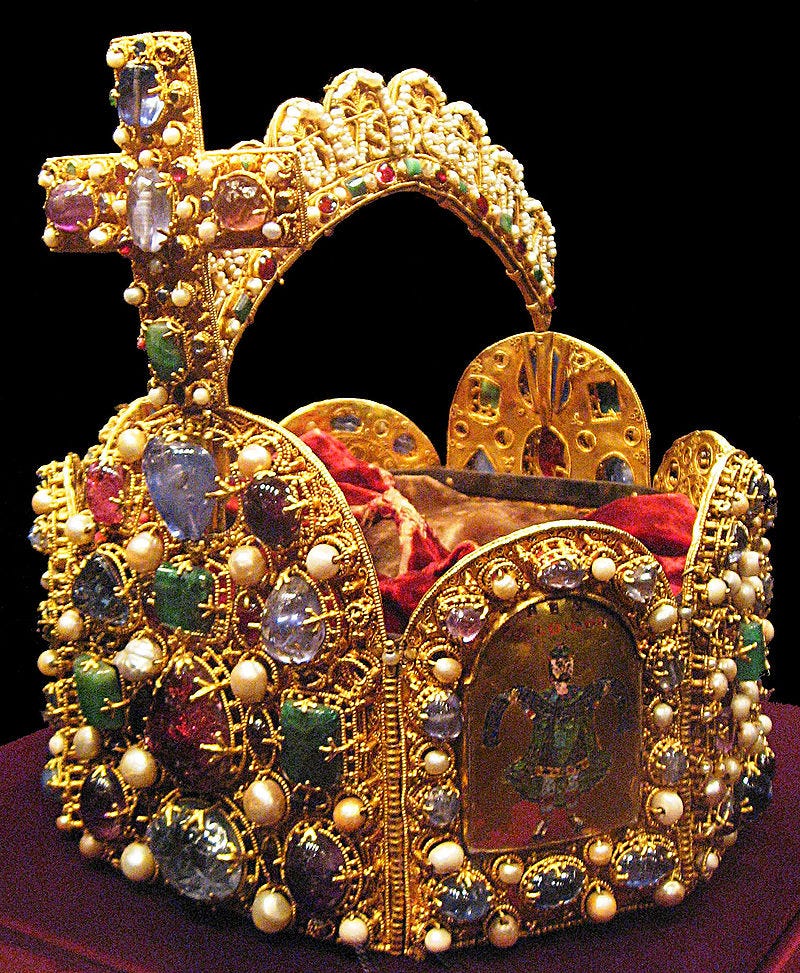Who was the first Holy Roman Emperor?
There is a fair amount of confusion surrounding the question of who actually holds the title. Was it Charlemagne or Otto I?
The fact that confusion still surrounds whether Charlemagne or Otto I was the first Holy Roman Emperor is a testament to the gross negligence of many educational systems to accurately describe what happened between the collapse of the Western Roman Jurisdiction in the late 5th century, and the Renaissance nearly a millennium later.
Thus, it is not the fault of the student, but rather of the descendant curriculum formed by disciples of Edward Gibbon —and other enlightened fellows—in their quest to relegate the one thousand years of medieval history to a level of base insignificance. For the enlightenment writers, the period cleft between them and the noble pagan Romans was too much to bear.
Everything that occurred in between was necessarily backwards, and thus necessarily irrelevant. Who ought to care about nonsensical titles and phony empires. After all, it was Voltaire, a contemporary of Gibbon’s, who famously quoted, “The Holy Roman Empire is neither holy, nor Roman, nor an empire.”
Gibbon’s multi-volume work on the decline and fall of the Roman Empire treats everything after 476 AD, when the Western Roman Emperor Romulus Augustulus was deposed by a Germanic chieftain, like a sudden mist through which only faint lights can be seen—a toxic hangover in which all the details seem to blur together. And like the recovering drunkard, details once remembered quickly dissipate.
As has been repeated on this Substack, Gibbon’s spiteful assault on the legacy of the period following his beloved Romans—or at least his perception of them—is unfounded at best, and deplorable, at worst.
As Gibbon’s influence—and that of his libertine compatriots—contaminated English academia and vigorously sailed across the ocean to infect American institutions as well throughout the 19th century, the anti-Medieval sentiment solidified itself within Anglo-American education. Interestingly enough, England was never even a part of Charlemagne’s or Otto I’s realm, yet his insular claim that Rome ended in that fateful year and that Christianity was to blame, came to supersede the continental experts. The sun never set on the British empire, so why ought it ever set of the authority of its intellectuals?
Disregarding the fact that many historians throughout the last centuries have simply accepted the falsity that the Roman Empire ceased to exist in the West following Romulus Augustulus’ defeat in 476 AD, the truth about what continued in the absence of the Roman patricians from Ravenna has remained. Where is it that one can find the truth? In the annals of history and work conducted by actual scholars that have been inoculated against 18th and 19th century elitist Anglo vitriol against the folk across the channel.
Now, we return to the question in the quest to identify the precise nature of Charlemagne’s empire and that of Otto I’s. However, our story must begin where Gibbon’s uncontrollable love for the Romans left off: the fracturing of the Western Roman Jurisdiction.
Previous articles on this Substack have already covered at great detail the events between the late 5th century collapse and the emergence of the states succeeding the Roman unity. In fact, they are five in number and belong to a series entitled: Origins of the Holy Roman Empire.
These articles are meant to provide a succinct overview of what happened during the Early Middle Ages, in chronological fashion, covering which major events, cultural movements, and personalities directed the trajectory of Western Europe towards a new empire.
Without recapitulating these articles entirely, we will settle for the question raised at the beginning—namely who deserves to be remembered as the first Holy Roman Emperor?
Keep reading with a 7-day free trial
Subscribe to Maintaining the Realm to keep reading this post and get 7 days of free access to the full post archives.





